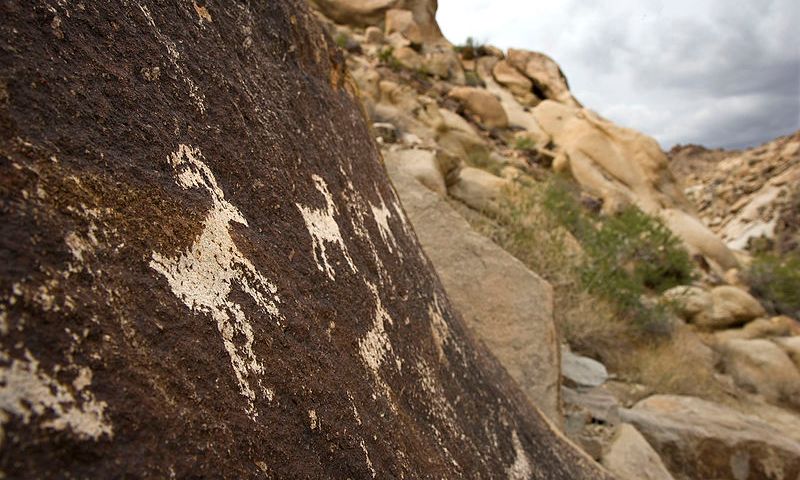A petroglyph in the Bridge Canyon Wilderness Area, a region now protected within the Avi Kwa Ame National Monument in Nevada. Photo by Lake Mead NRA Public Affairs, via Wikimedia Commons
The United States has designated two new national monuments in the American Southwest, President Joseph Biden announced this week, designations that will provide additional protections to areas in Nevada and Texas that are home to Indigenous art, including pictographs and petroglyphs.
The move will protect more than half a million acres of land in southern Nevada that contains a large section of what’s known as the Spirit Mountain area, or by the Mojave name Avi Kwa Ame. The region is one of the largest contiguous wildlife corridors in the US, rich in biodiversity and contains “sacred lands that are central to the creation story of so many [Native American] tribes that have been here since time immemorial”, Biden said Tuesday (21 March) at the White House. Some 33,000 acres of the Avi Kwa Ame area were already under national protections from the Wilderness Act of 1964.
The Avi Kwa Ame area is also home to multiple examples of petroglyphs that depict nearby resources like water, large game and acorns, and even pictographs that appear to show directions for migration, according to the White House. Along with Indigenous petroglyphs, rock etchings made by late 19th century Euro-American settlers have been found in some areas.
Biden also designated the Castner Range in Texas as a national monument, more than 50 years after residents of nearby El Paso first began appealing for safeguards for the area located at the Army base Fort Bliss. The area is still filled with unexploded munitions left from when the fort was used as a training site during the Second World War, the Korean War and the Vietnam War.
Castner Range’s federal protections will extend to 6,672 acres of the region, which stretches from the Franklin Mountains at Texas’s westernmost point down to the plains of the Chihuahuan Desert on the Mexican border. Novelist Jack Kerouac described the area in his 1950 book The Dharma Bums, writing that from the Franklin Mountains he could see “all of Mexico, all of Chihuahua, the entire sand-glittering desert of it, under a late sinking moon that was huge and bright”. Castner Range is also known for the Mexican Gold Poppies that bloom in the area each spring.
Archeologists have identified 41 archeological sites within the Castner Range with ties to the Apache and Pueblo peoples, Comanche Nation, Hopi Tribe and Kiowa Indian Tribe of Oklahoma. The Castner Range is also home to sites containing Indigenous rock art from as far back as 1350 CE.
Biden put both areas under protection using the Antiquities Act, a law dating back to 1906, when President Theodore Roosevelt designated Devils Tower in Wyoming as the US's first national monument.

